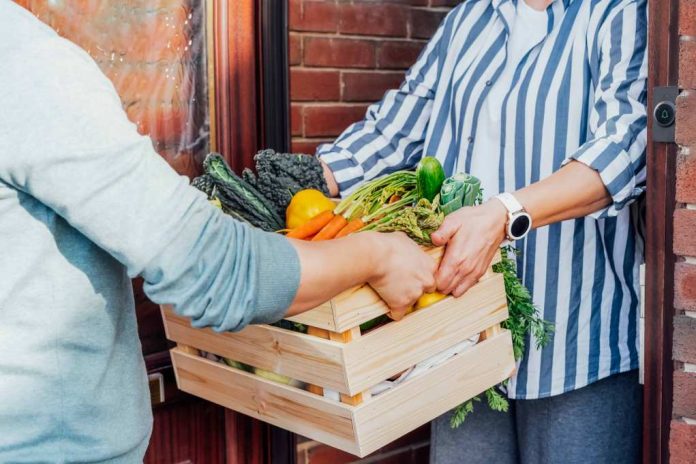List-making, shopping, and preparing meals are hard enough. When you add financial hardships on top of that, you’ve got a recipe for disaster! It’s no secret that groceries are expensive these days. The good news is that low-income families may be able to benefit from government assistance. The United States Department of Agriculture (USDA) funds numerous programs. If you’re curious about what you might be eligible for, this article can help!
What Kind of Support You Can Get from Various Food Assistance Programs
Food insecurity continues to be a consistent issue for a percentage of American households. It’s important that the government continues to fund food assistance programs that can help. When it comes to food assistance, no two programs are the same! Each assistance option serves a different purpose. Some households may even be eligible to benefit from multiple programs at one time. If you’re considering seeking help, you can consider one or more of the following opportunities:
- Supplemental Nutrition Assistance Program (SNAP)
- Special Supplemental Nutrition Program for Women, Infants, and Children (WIC)
- Commodity Supplemental Food Program (CSFP)
- The Emergency Food Assistance Program (TEFAP)
- Farmers Market Nutrition Program (FMNP)
- School Breakfast Program (SBP)
- National School Lunch Program (NSLP)
- Fresh Fruit and Vegetable Program (FFVP)
- Senior Farmers’ Market Nutrition Program (SFMNP)
- Summer Food Service Program (SFSP)
Supplemental Nutrition Assistance Program (SNAP)
The Supplemental Nutrition Assistance Program (SNAP) is a government-funded program that provides financial assistance for purchasing groceries. Low-income households can benefit from this support option. It’s likely that you’ve heard of this program before, seeing as it benefits millions of recipients each year. Moreover, it’s been around for many decades. In fact, the very first Food Stamp Program dates all the way back to 1939! You may find that SNAP is commonly referred to as food stamps today.
The program works by distributing monthly funds that can be used at authorized retailers to purchase qualifying food items. Approved recipients of SNAP get their own Electronic Benefit Transfer (EBT) card, which is used for payment when making purchases. Recipients can also manage and access their funds using these cards. Not everyone is eligible to receive SNAP. Only applicants that meet certain qualifications can benefit from this food assistance option. The exact criteria vary depending on which state an applicant resides in. If you’re interested in learning more about these benefits, you can do additional research online. It may also be a good idea to speak to someone directly at your state’s SNAP agency.
Special Supplemental Nutrition Program for Women, Infants, and Children (WIC)
The Special Supplemental Nutrition Program for Women, Infants, and Children (WIC) is another widely known food assistance initiative. This program is specifically designed to support pregnant and postpartum women, infants up to one year old, and children aged up to five years old. Low-income individuals that are believed to be at nutritional risk due to poor diet or medical conditions can apply for this program. WIC is administered to millions of recipients each year through a total of 89 agencies. Recipients of WIC can benefit in multiple ways. The program offers supplemental nutrition assistance, in addition to health care referrals and nutrition education. Specifically, a few of the benefits include:
- Nutritious food packages include fruits, vegetables, whole grains, dairy products, and proteins.
- Breastfeeding support through counseling sessions and educational materials.
- Health screenings for both mother and child.
- Nutrition education classes cover topics such as meal planning and healthy eating habits.
This program aims to improve the overall well-being of mothers and their young children by providing essential resources. There are around 47,000 approved retailers, 1,900 agencies, and 10,000 clinic sites that WIC recipients can access! Common clinic sites include schools, hospitals, county health departments, and more. If you believe that you could be eligible for this food assistance, reach out to your state’s agency as soon as possible.
Commodity Supplemental Food Program (CSFP)
The Commodity Supplemental Food Program (CSFP) is designed to provide high-quality USDA foods that supplement the diets of low-income Americans. To be eligible for CSFP benefits, individuals must be seniors aged 60 years or older. The assistance that qualifying seniors can receive with this program is typically through food packages. These packages contain nutritious foods that are meant to make up for nutrients that may be lacking in the recipient’s regular diet.
Seniors that can benefit from this program don’t directly benefit from CSFP. Instead, local organizations that are either public or nonprofit and private distribute the aid to eligible individuals. Local organizations are also tasked with deciding who is eligible to receive these food packages. They receive food and other resources from state agencies. CSFP allocates food and funding to participating states and Indian Tribal Organizations (ITOs). To learn more about this program or to find out if you’re eligible, reach out to your state’s CSFP agency!
The Emergency Food Assistance Program (TEFAP)
The Emergency Food Assistance Program (TEFAP) also helps supplement the diets of low-income individuals. Unlike the previous program, CSFP, people of various ages can benefit from TEFAP! Eligibility requirements vary by state but typically include households with incomes below a certain level. In order to access the nutritious food provided through TEFAP, participants can visit local distribution centers like food pantries. This program benefits people in need during tough times by offering food assistance in an emergency. Moreover, this assistance comes at absolutely no cost to the individual.
The government provides this program by providing nutritious USDA foods to state agencies. State agencies then make food and supplies available to local organizations such as food pantries and soup kitchens. Meanwhile, examples of state agencies include food banks. Every state that participates in TEFAP doesn’t receive the same amount of food to distribute. The government looks at both unemployment and poverty rates within each state to determine how much a need there is. If you’re in need of immediate relief, TEFAP may be able to benefit you. You can reach out to your state agency by finding contact information online. The Food and Nutrition website can point you in the right direction.
Farmers’ Market Nutrition Programs (FMNP)
Farmers’ Market Nutrition Programs (FMNP) and one of the previous programs we discussed, WIC, are actually related to each other. Recipients of WIC can qualify for additional food assistance with FMNP. However, not all WIC recipients can get additional benefits from this program. Infants that are younger than four months old cannot receive FMNP vouchers.
This program aims to increase access to fresh fruits and vegetables from local sources. The program distributes vouchers to recipients that can be redeemed at authorized farmers’ markets or roadside stands selling fresh produce. In turn, these local businesses are impacted in a positive way. To learn more about your state’s FMNP voucher program, check out this online resource.
School Breakfast Programs (SBP)
Certain facilities can take part in the School Breakfast Program (SBP). Participating schools and childcare centers provide qualifying children with a free or reduced-cost breakfast. SBP then reimburses them through cash subsidies for the breakfast that they offer. Income requirements and household status influence the eligibility of a family applying for SBP. In addition to that, families that are already receiving benefits from SNAP or other programs may automatically qualify. Children that are migrants, runaways, currently in the foster system, or experiencing homelessness may also be able to qualify.
The Food and Nutrition Service (FNS) funds the program. Whereas, state agencies are responsible for administering the assistance. In addition to that, schools consult with their state agencies if they are participating in the program or want to in the future. Facilities that are able to run SBP include public schools, non-profit private schools, and residential childcare centers.
National School Lunch Programs (NSLP)
The National School Lunch Program (NSLP) and SBP actually have quite a bit in common. This food assistance program provides free or lower-priced lunches to qualifying children. Public schools and private schools are approved to run this program. One important requirement to keep in mind is that the lunches served must be nutritionally balanced. Therefore, they should contain essential nutrients. NSLP requires that the lunches satisfy one-third of the following nutrient categories:
- Total Calories
- Vitamin A
- Vitamin E
- Iron
- Calcium
- Protein
Just like SBP, this program’s eligibility is based on a family’s income level. There are different income limits in place to determine whether a child can get a free lunch or one at a lower cost. Free lunches are awarded to children whose parents make an income that does not exceed 130% of the federal poverty line. Whereas, families that make an income between 130-185% of the poverty level, qualify for discounted lunches. To apply for these benefits, parents must fill out an application form provided by their child’s school. Schools then determine eligibility based on income guidelines set by the government each year.
Senior Farmers’ Market Nutrition Program (SFMNP)
By participating in the Senior Farmers’ Market Nutrition Program (SFMNP), low-income seniors can enjoy healthier diets while supporting their local communities. This food assistance program offers access to fresh and locally grown fruits, vegetables, honey, and herbs. Recipients are provided with food vouchers that can be redeemed at approved farmers’ markets or roadside stands.
To qualify for the SFMNP benefits, individuals must meet certain age and income requirements. Participants must be 60 years or older and have a household income of 185% or less than the federal poverty level. For more info on qualifying criteria, check out the website of your state’s agency.
Fresh Fruit and Vegetable Program (FFVP)
The goal of the Fresh Fruit and Vegetable Program (FFVP) is to increase fruit and vegetable consumption among children attending qualifying elementary schools. By providing free fresh produce as a snack option throughout the school year, this program promotes healthier eating practices. In addition to that, they work to educate children on the importance of positive nutritional habits. Examples of the fresh produce that is served with FFVP include:
- Fruits: Apples, oranges, bananas, grapes, kiwi fruit, pears, cherry tomatoes
- Veggies: Carrot sticks, cucumber slices
- Berries: Strawberries, blueberries, raspberries, blackberries
Note: All fruits and vegetables should be fresh, unprocessed, and without added sugars, fats, salts, or preservatives.
Summer Food Service Program (SFSP)
This program is commonly known as the Summer Meals Program. SFSP provides free meals to children and teens up until the age of 18 years old during the summer months. Facilities that operate this program are reimbursed as compensation for the meals they serve to kids. Although SFSP is federally funded, it is state-operated. The state agencies that operate this program partner with sites and sponsors to make it happen. Sponsors typically include schools and local nonprofits. Meanwhile, sites can include hospitals, churches, local parks, community centers, and more.
Bottom Line
When it comes to nutrition assistance, the United States Department of Agriculture (USDA) provides a variety of opportunities. Most food assistance programs require specific eligibility criteria in order to benefit. Not only that, many of the programs are state-run. Therefore, eligibility may vary between different areas. If any of the programs we covered in this article caught your eye, we recommend that you do additional research. Your best source for additional information is your state’s corresponding agency. They will be able to provide you with the most up-to-date and accurate information. A quick online search can provide you with the correct contact information to move forward.














